The fortress of Castell de Santueri in Felanitx perches majestically on a steep cliff and offers breathtaking views of the sea. This historic structure was once a crucial refuge for the region’s inhabitants during invasions and conflicts. Thanks to its strategic location and massive defensive fortifications, the Castell de Santueri could only be captured through a clever trick, earning the castle a reputation as an impregnable stronghold. As one of only three cliffside fortresses in Mallorca, it stands as a significant testament to the island’s history.
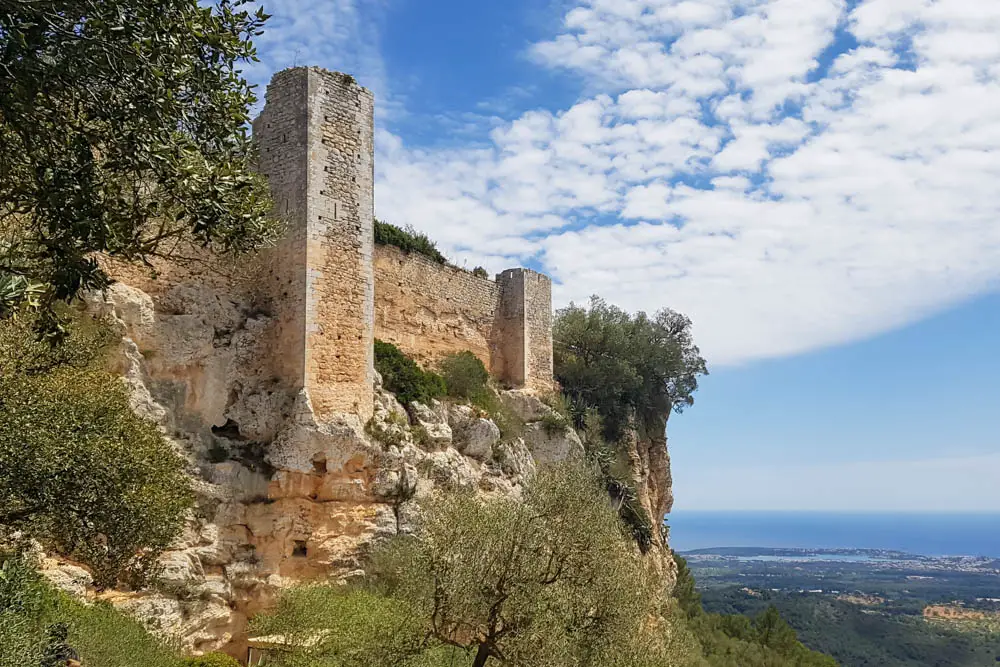
Transparency note: Some links in this post may lead to external booking opportunities. If a purchase is made, we receive a small commission. The price does not change for you.
When it comes to excursions and tours around Felanitx, most people initially think of the San Salvador monastery, which overlooks the small town. However, in proximity, if you will, in the shadow of the monastery, lies the ruins of the cliffside fortress Castell de Santueri. It’s not as crowded and much more child-friendly than the monastery, making it a great destination for families. Here, you can let the kids burn off energy while enjoying breathtaking views of Mallorca.
The history of the cliffside fortress Castell de Santueri
If you’re somewhat familiar with the history of Mallorca, you’ll know that the island witnessed a constant ebb and flow of attackers, invaders, and reclaimers. The remains of the Castell de Santueri fortress, as we see them today, date back to the Middle Ages. However, its origins can be traced back to the early days of Mallorca’s settlement.
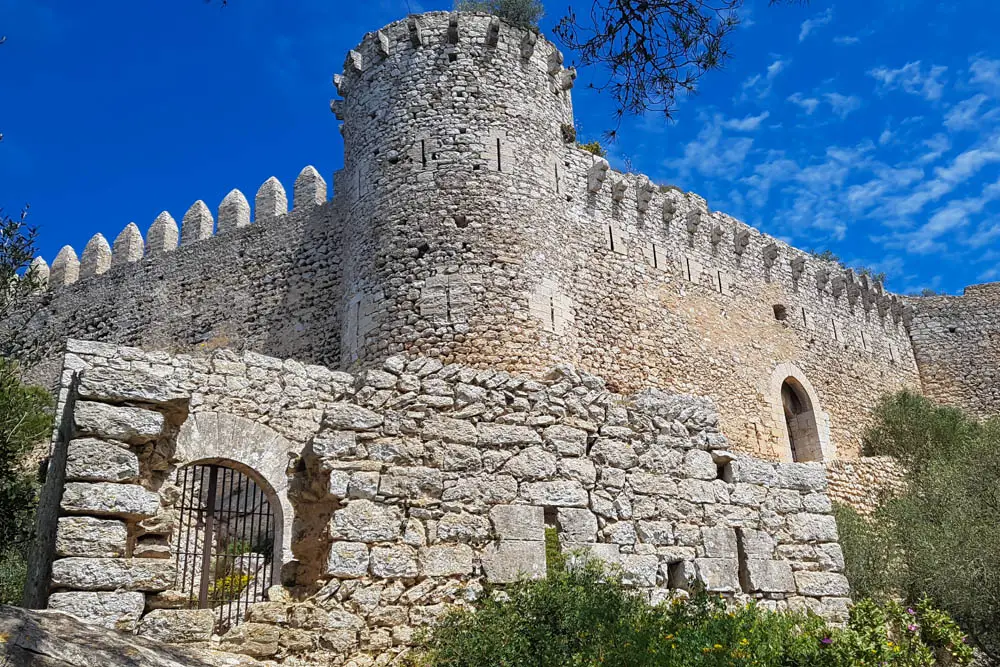
During sieges, the Castell de Santueri served as a refuge for the inhabitants of the surrounding villages. For this reason, the inner area of the fortress was designed to enable the castle’s residents to live self-sufficiently for extended periods. The plateau within the castle walls was used for agriculture. Additionally, there was a water supply network with several reservoirs, a mill, a well, a bakery, and a chapel.
The Arabs, experts in perfecting sophisticated systems, expanded the fortress so skillfully during their rule that it was initially impossible to capture it during the reconquest in the 13th century. How they eventually succeeded is told by a legend a bit further down.
After the Arabs had definitively withdrawn, pirates targeted Mallorca. Although the Castell de Santueri is not directly located near the coast, it was integrated into the system of watchtowers to protect against pirate attacks. From there, both parts of the sea and the inland could be monitored.
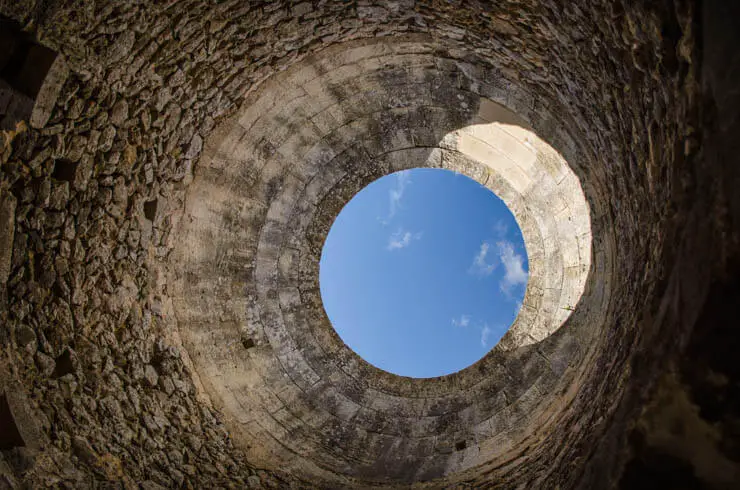
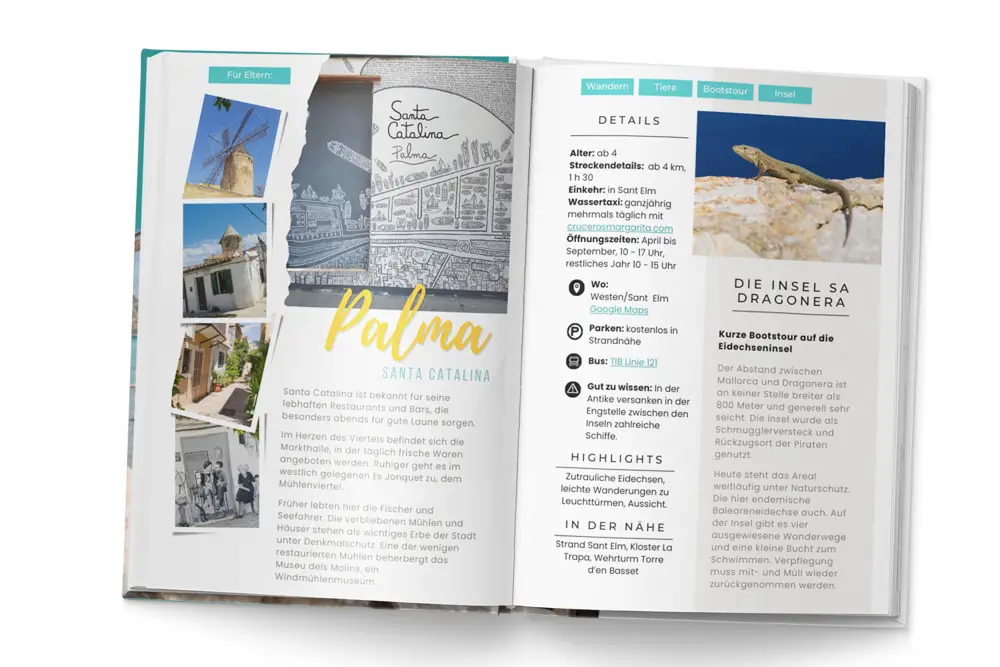
Du liebst diese Tipps?
Entdecke alle kinderfreundlichen Aktivitäten, Strände und exklusive Rabatte in meinem Mallorca-Guide.
With the reconquest of the island, the Castell de Santueri ultimately fell into the possession of the Crown of Aragon. King Jaume I nearly completely destroyed the castle during the conquest. As pirate attacks increased in the 14th century, the castle was rebuilt and expanded to serve as a refuge in case of pirate attacks, providing protection to the residents of the surrounding villages as well.
As the attacks waned, the fortress lost its significance. Since 1811, the castle has been privately owned. Its renovation has also been and continues to be funded privately, with oversight from the Consell de Mallorca, the island council. Since 2004, the cliffside fortress has once again opened its gates to the public.
Your Visit of Castell de Santueri
The Castell de Santueri, alongside Castell d’Alaró and Castell del Rei near Pollença, is one of the three cliffside fortresses in Mallorca. Since 1949, it has been listed as a UNESCO World Heritage Site. From the plateau of the castle ruins, you can enjoy a panoramic view of Mallorca, stretching on clear days all the way to the Cabrera Islands in the south and Menorca in the east.
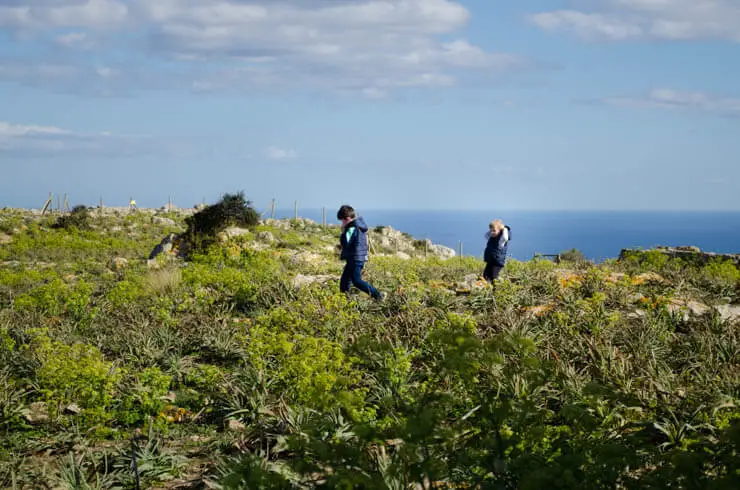
The tour through the Castell de Santueri fortress is divided into eleven stations, alphabetically ordered. The brochure available at the entrance explains each station in detail. Additionally, visitors can use QR codes and a mobile phone to access this information. The tour takes about an hour, but visitors can also spend longer exploring the site.
The path through the remains of the castle walls is not suitable for strollers, but it poses little problem for younger children who can walk. Dogs are allowed as long as they are kept on a leash within the castle walls. The entrance fee is 4 euros, which goes towards the ongoing restoration costs. Children get in for free.
From the high plateau, you’ll enjoy a fantastic view of the sea and the foothills of the Serra de Llevant. On clear days, you can even spot more distant locations and the islands of Menorca and Ibiza.
Hiking to the Rock Fortress
If you and your children are up for a bit more activity, you can also hike up the castle hill on foot. There are hiking options from Es Carritxo and s’Horta (near Cala d’Or). In the case of Es Carritxo, you’ll need to walk a stretch along the main road. The tour from s’Horta starts at the football field and leads through the fields towards the castle ruins.
The most popular, albeit somewhat challenging, hiking trail leads from Castell de Santueri to the Santuari de Sant Salvador monastery, which is clearly visible from the castle walls. The hiking trail begins in the second-to-last hairpin turn on the access road. The one-way distance is about five kilometers, and you should plan for a walking time of 2.5 hours.
The legend of the Castell de Santueri
Legend has it that even after King Jaume I had already conquered Mallorca, resistance persisted at the Castell de Santueri fortress. This prompted the king to assign his finest knight with the task of capturing the castle once and for all.
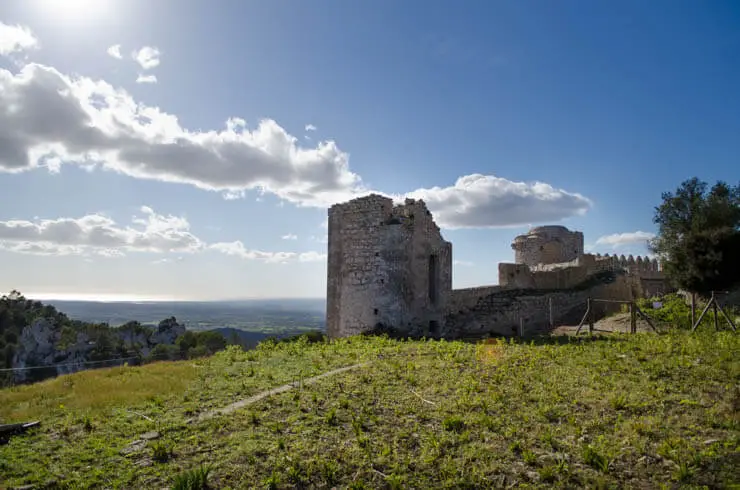
But the Saracens only laughed at the besieged Christians. For over a year, they had filled their pantry with food. How they obtained their supplies was a mystery to all. Was there a secret tunnel to the sea? Or a magic cloak that rendered them invisible?
The knight realized that he wouldn’t win with weapons alone. However, he was determined to see his king’s flag waving atop the castle. When he heard music from a celebration in the distance, an idea struck him. He rode to Felanitx and shared his plan with the farmers there.
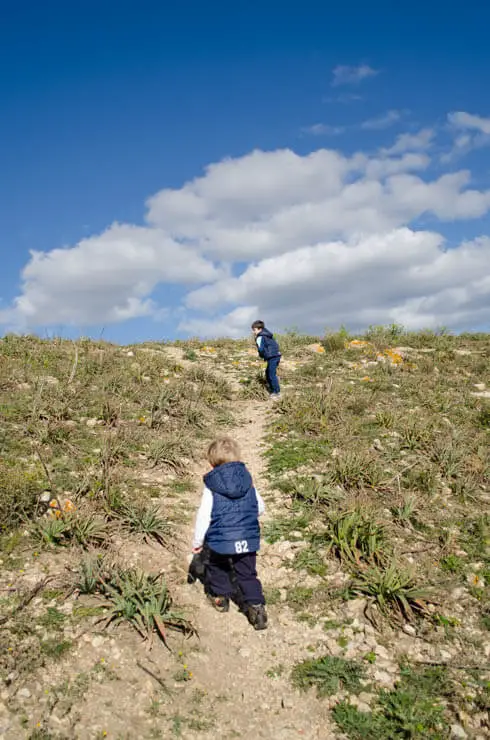
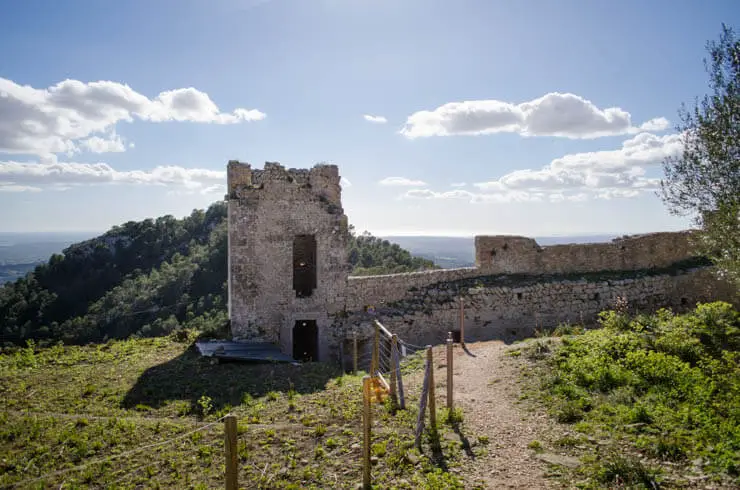
The following day, a procession of musicians and dancers made their way to the property beneath the castle, where they performed a lively dance accompanied by drums and music. The Saracens were more than astonished; they were curious. They leaned far over the castle walls to observe the spectacle.
Meanwhile, three armed men marched on the other side of the fortress and stealthily climbed the walls. They entered the castle unseen and opened the gates. Immediately, a band of warriors stormed in.
The attack was swift and unexpected. None of the guards could react. Cries of helplessness and anger at their own naivety echoed throughout the castle. Everyone was captured, while a soldier ascended the tower and raised the king’s flag.
In Brief
- Opening hours: May 1st to October 31st, daily from 10:00 AM to 6:30 PM.
- Parking: A limited number of free parking spaces are available at the entrance of the castle.
- Strollers: Not suitable.
- Admission fee: €4, children enter for free.
Zum Weiterlesen
Warst du schon einmal hier? Teile anderen Lesern deine Erfahrung gerne in den Kommentaren weiter unten mit!
Lust auf mehr Mallorca-Tipps? Mit der Anmeldung zum Newsletter erhältst du 7 Tage lang je einen Geheimtipp der Insel direkt in deine Mailbox.